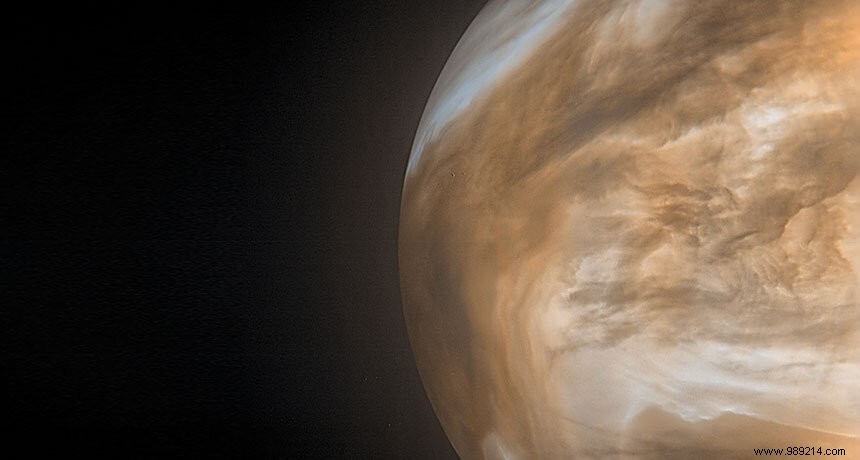A recent study suggests that the clouds of "young" Venus formed primarily on the night side of the planet, limiting the reflection of sunlight into the space. As a result, Venus would never have cooled enough to support liquid water necessary for the development of life as we know it.
A few months ago, a team of scientists made headlines suggesting the presence of phosphine, a chemical proposed as a potential indicator of life in the atmosphere of Venus, at an altitude between 35 and 50 km where pressure and temperatures are similar to Earth. A study published a few weeks later finally pointed out that the possible phosphine discovered in the Venusian atmosphere was probably just ordinary sulfur dioxide.
Recently, a new article published in Nature also went in the same direction, pointing out that the conditions in the clouds of Venus are in no way compatible with life as we know it . If the Venusian clouds are indeed showing what we might call "mild" temperatures, they obviously don't have enough water to sustain it. But what about the Venusian surface billions of years ago?
Venus is a hellish planet these days. Its incredibly dry surface is hot enough to melt lead, and the pressure is overwhelming. Nevertheless, some researchers have previously argued that young Venus may have cooled enough after its formation to accommodate liquid surface liquid water, thanks in large part to its clouds being able to reflect solar radiation back into the planet. space. At the time, remember that the Sun, also still very young, was only 70% as bright as today .
That being said, in the context of new work published in Nature, a team led by Dr. Martin Turbet, of the Astronomical Observatory of Geneva (Switzerland), has again simulated the climate of ancient Venus with a new model. And the researchers came to very different results.

In their study, the researchers point out that the conditions on young Venus probably limited the clouds to the "night side" of the planet. Recall that Venus is not "locked" by the Sun. Thus, it does not have a permanent "night side" per se like the Moon with the Earth. The term here simply refers to the hemisphere opposite the Sun.
So not only were these clouds not reflecting sunlight, but they were actually heating Venus via a greenhouse effect. Thus, the planet would never have cooled sufficiently for liquid water to form and persist on the surface . "If the authors are right, Venus has always been hell “Summarizes astronomers James Kasting and Chester Harman of Pennsylvania State University and NASA Ames Research Center.
Remember that Venus will soon receive visitors again. Further work on the Venusian surface could thus confirm (or not) these results.